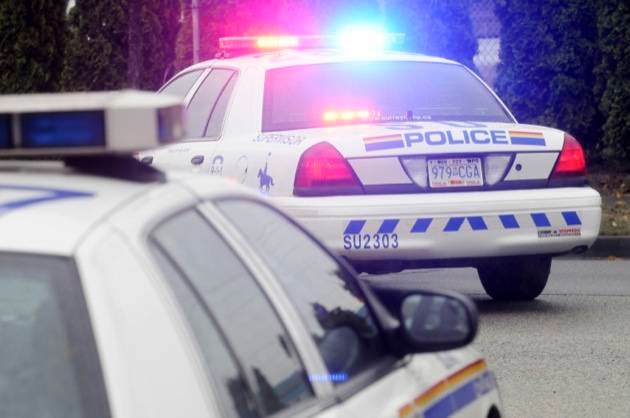The District of Kitimat saw a 14 per cent jump in its violent crime severity index in 2021 from 157.8 to 180.71 according to the latest Statistics Canada (StatCan) data released July 25.
With the increase, Kitimat jumped three spots from 34th to 31st of the 181 police jurisdictions in B.C. for which data is available.
That bucks a trend among northwest B.C. municipalities with Houston, Smithers, Terrace and Prince Rupert all seeing significant decreases in their VCSI.
Meanwhile the overall crime severity index (CSI) for the district remained steady at 113.35 compared to 113.66 the year before and the non-violent crime severity index (NVCSI) dropped 8.87 per cent from 97.51to 88.86.
With crime severity trending downward generally, both in the province and nationally, Kitimat remaining even on overall CSI raised its position relative to other jurisdictions from 55th in the province to 53rd.
The district still ranks much better, however, than Houston (15th), New Hazelton (18th), Prince Rupert (22nd), Smithers (23rd) and Terrace (33rd).
Kitimat mayor Phil Germuth said while the district is obviously concerned by any rise in any crime category, he is confident Kitimat is still a “very safe community.”
“From the data, we know there are many categories where reported crimes have even reduced in Kitimat,” he said.
“The District is well connected to the Kitimat RCMP to ensure we’re well aware of what is happening within the community. As our community grows we know there will be issues that come with it, that’s natural, but Kitimat continues to be a safe town to live and work.”
Staff Sgt. Graham Morgan, Kitimat detachment commander, said the rise in the violent crime index may be somewhat deceiving.
“The specific category of violent crime reports is up as a per cent, but on balance we saw fewer calls for service in 2021 over 2020,” he wrote in an email to the Northern Sentinel. “The Kitimat RCMP has been very active in our crime prevention and community engagement, and we collaborate with partner agencies regularly. We want community members to feel comfortable coming to us to report these crimes.”
He also noted the threat of violence to the general public is relatively low.
“We know that the majority of reported violent crime cases involve persons who know each other,” he said.
In response to that, the Kitimat RCMP and various community partners participate in an interagency case assessment team for high-risk domestic violence cases.
As well, the District recently launched the Kitimat Situation Table to help individuals or families in the community at the highest risk connect with appropriate services in a timely manner.
“We continue to encourage any member of the public to contact our detachment any time if they believe they are the victim of a crime.”
READ MORE: Thrift store broken into and robbed
For the province as a whole, the CSI was down by 4.61 per cent and the NVCSI decreased 7.55 per cent. The VCSI, however, jumped 4.32 per cent.
Smaller municipalities have always been skeptical of the meaningfulness of the crime severity indices noting that a single murder, for example, or a particularly troublesome hospital patient, can skew the numbers dramatically for a town of only 8,100 people and in any given year might not necessarily reflect the overall safety of the community.
StatCan acknowledges that taken discreetly, the numbers can be misleading, but nevertheless maintains they are useful in tracking crime trends and the relative safety of communities.
“The Crime Severity Index is also a tool for measuring the increase or decrease in the severity of crime over time in any given jurisdiction, such as provinces and territories, and for comparing the seriousness of crime among jurisdictions,” an article on the StatCan website states.
“Over time, police-reported crime rates have generally been higher in the west and north than in eastern and central regions of the country. This is also true for crime severity, as measured by the new Crime Severity Index.”
While Kitimat fares well compared to other northwest communities, it remains middle of the pack provincially over time.
Comparing Kitimat to provincial and national data for the period 2017-2021, the town’s five-year average CSI of 98.78 is comparable to B.C.’s 94.09 average for the same period, although significantly higher than the Canadian average of 75.3.
The Kitimat average is also significantly lower than Lethbridge, Alta.’s 2021 CSI of 128.65. Last year, Lethbridge once again ranked as Canada’s most dangerous census metropolitan area (CMA), or city with more than 100,000 population.
Fort St. James (rural) ranked number one among police jurisdictions in the province in 2021 with a CSI of 293.52, up 3.2 per cent from the year before.
Fort St. James also took top spot for NVCSI at 281.49.
Hope (rural) claimed the highest VCSI in the province at 433.36.
The Top 10 among all reporting police jurisdictions in B.C. were: Fort St. James (rural), Hope (rural), Quesnel, Prince George, Agassiz (rural), Williams Lake, Merritt, Port Hardy (rural), Penticton and Northern Rockies (rural).
B.C.’s big cities, Kelowna, Vancouver, Abbotsford-Mission and Victoria ranked second, 10th, 13th and 18th respectively among Canada’s 37 CMAs.
The Top 5 CMAs in the country were: Lethbridge; Kelowna; Winnipeg, Man.; Moncton, N.B.; and Regina, Sask.
StatCan started tracking the crime severity indices as a better reflection of the relative safety of communities in 1998.
Nearly 40 per cent of police-reported crimes in Canada are theft under $5,000 and mischief. The calculation of the severity indices gives lesser weight to these types of crimes and more to violent and serious crimes.
